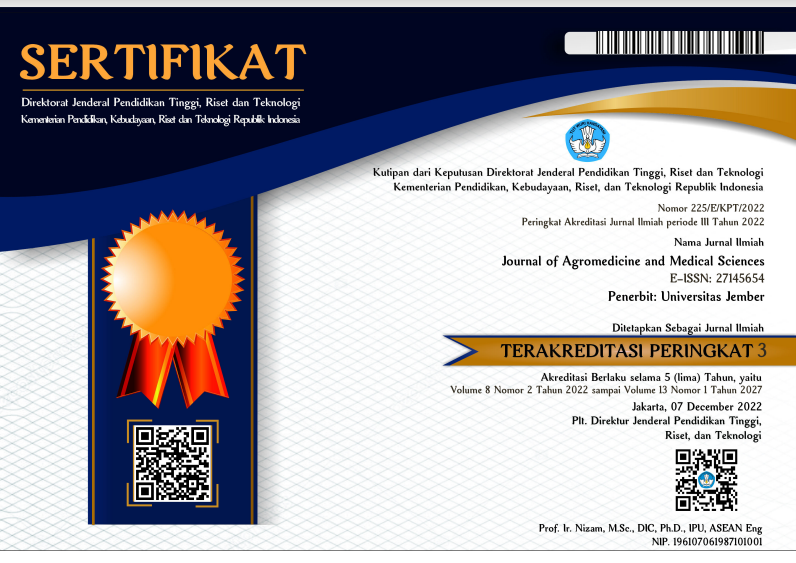The Analgesic Effectiveness Test of Cocoa Husk (Theobroma cacao L.) Extract to Licking Time of Mice Induced by Formalin
DOI:
https://doi.org/10.19184/ams.v4i2.6328Abstract
Cocoa (Theobroma cacao L) is an industrial material that often used in chocolates production, but the part that used is cocoa bean, so that cocoa husk accumulate as waste. This study aimed to determine effectiveness of cocoa husk extracts to first and second phase of licking time of mice induced formalin. This study used 28 mices that divided into seven groups. NaCMC 1% to group K(-), 0.0048 mg/gBW sodium diclofenac to K(+), extracts dose variations, ie 0.25 mg/gBW, 0.5 mg/gBW, 1 mg/gBW, 2mg/gBW and 4 mg/gBW to group K1, K2, K3, K4, and K5 administered orally 30 minutes before subcutaneous injection of 200 μl formaldehyde 2.5% on hind paw. Graph of dose response on first phase data was fluctuate with highest inhibition percentage occurred on dose group 0,5 mg/gBW and 1 mg/gBW, that is 68,750% while on second phase data was biphasic with highest inhibition percentage occurred on dose group 1mg/gBW, that is 94,052%. One Way ANOVA analysis showed no significant difference (p> 0.05) on first phase, but showed significant difference (p <0,05) on second phase. This results indicated that cocoa husk extracts can decrease second phase, inflammatory phase significantly.
Keywords: cocoa, analgesic, licking time, formaldehyde, inflammatory phase






















